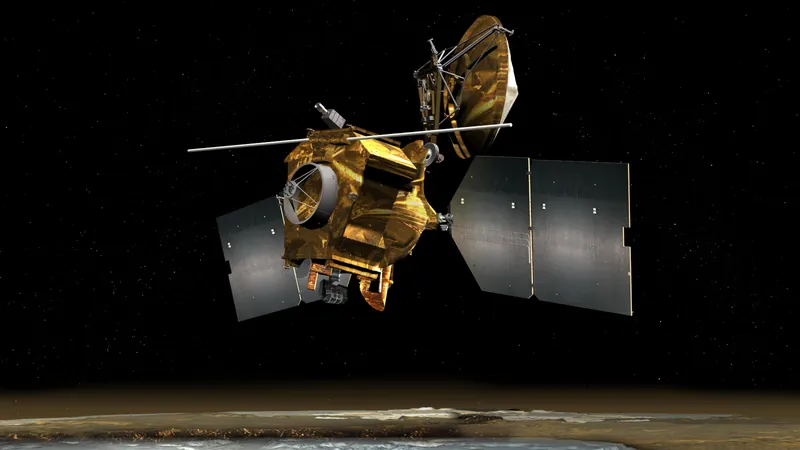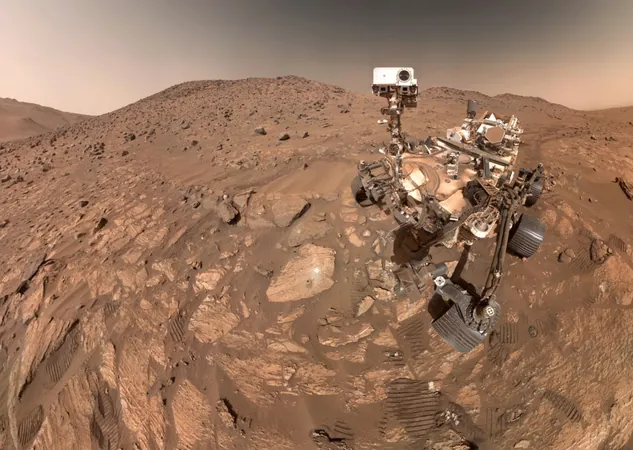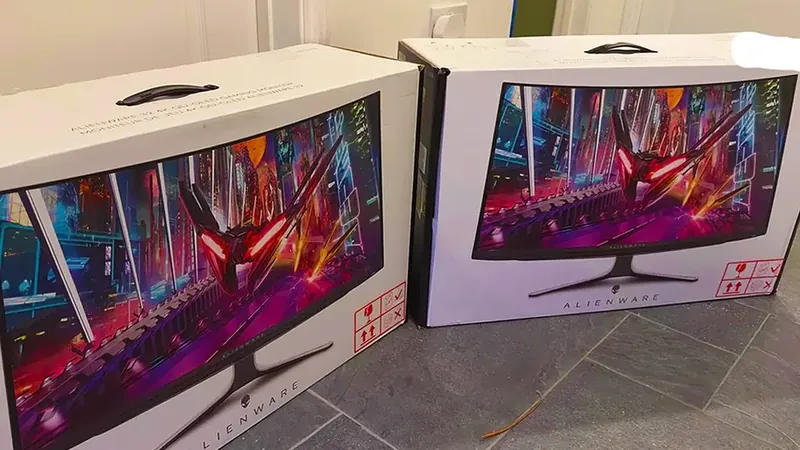
NASA's Mars Orbiter Learns New Tricks in Search for Water!
2025-07-07
Author: Noah
Mars Reconnaissance Orbiter Rolls into Action!
NASA's Mars Reconnaissance Orbiter (MRO), a seasoned veteran orbiting the Red Planet since 2006, is now turning heads—literally! It's learned to perform backward rolls to enhance its chances of uncovering elusive water-ice hiding beneath Mars' surface.
Gareth Morgan, a co-investigator from the Planetary Science Institute, exclaimed, "Not only can you teach an old spacecraft new tricks, you can open up entirely new regions of the subsurface to explore by doing so!" This is a game-changer in Martian exploration.
How Does It Work?
MRO boasts five functional instruments, with a sixth, the Compact Reconnaissance Imaging Spectrometer for Mars, recently powered down. Traditionally, MRO tilts itself up to 28 degrees to focus its instruments on designated targets, but this often leaves other instruments out of action.
One instrument, SHARAD (Shallow Radar), has always been at a disadvantage because it sits at the rear of the spacecraft. Unlike its front-positioned counterparts like HiRISE, SHARAD’s radar signals often get muddled by the spacecraft's structure, limiting its ability to detect water-ice buried up to 1.2 miles below the Martian landscape.
The Dramatic 120-Degree Roll Challenge!
Starting in 2023, engineers decided to get a bit daring. They began experimenting with massive 120-degree backward rolls, allowing SHARAD to obtain an unobstructed view of the Martian surface and dramatically boosting the strength of its radar signals. This innovative maneuver enhances the possibility of detecting water deposits that could be crucial for future manned missions.
However, these ambitious rolls are not without their challenges. Unlike standard maneuvers, which allow MRO’s high-gain antenna to remain directed at Earth and its solar arrays to catch sunlight, the 120-degree roll compromises power sources during execution.
Powering Exploration with Careful Planning!
MRO's Project Manager, Reid Thomas, emphasized the necessity for intricate planning. "The very large rolls require special analysis to ensure we'll have enough power in our batteries to safely execute the stunt," he explained. As a result, the team plans to limit these impressive maneuvers to just one or two each year.
Unlocking Mars' Mysteries for Future Explorers!
These daring rolls could yield significant rewards. Discovering pockets of water-ice near the Martian surface could prove essential for future astronauts, repurposing it for drinking water, oxygen production, and rocket fuel. Plus, insights into water's presence across different latitudes could unveil secrets about Mars' climatic history.
An Unexpected Scientific Boost!
Additionally, the Mars Climate Sounder, which measures temperature changes across Martian seasons and struggled with aging equipment, now benefits from the flexibility of these large rolls. Once limited to the standard 28-degree approach, it can now optimized its observations thanks to these new maneuvers.
In a twist of fate, the rolls that used to restrict MRO's scientific output are now revitalizing it! While they might not be doing cartwheels, the Mars Reconnaissance Orbiter proves it still has a vital role to play in the exciting quest to uncover Mars' secrets.









 Brasil (PT)
Brasil (PT)
 Canada (EN)
Canada (EN)
 Chile (ES)
Chile (ES)
 Česko (CS)
Česko (CS)
 대한민국 (KO)
대한민국 (KO)
 España (ES)
España (ES)
 France (FR)
France (FR)
 Hong Kong (EN)
Hong Kong (EN)
 Italia (IT)
Italia (IT)
 日本 (JA)
日本 (JA)
 Magyarország (HU)
Magyarország (HU)
 Norge (NO)
Norge (NO)
 Polska (PL)
Polska (PL)
 Schweiz (DE)
Schweiz (DE)
 Singapore (EN)
Singapore (EN)
 Sverige (SV)
Sverige (SV)
 Suomi (FI)
Suomi (FI)
 Türkiye (TR)
Türkiye (TR)
 الإمارات العربية المتحدة (AR)
الإمارات العربية المتحدة (AR)